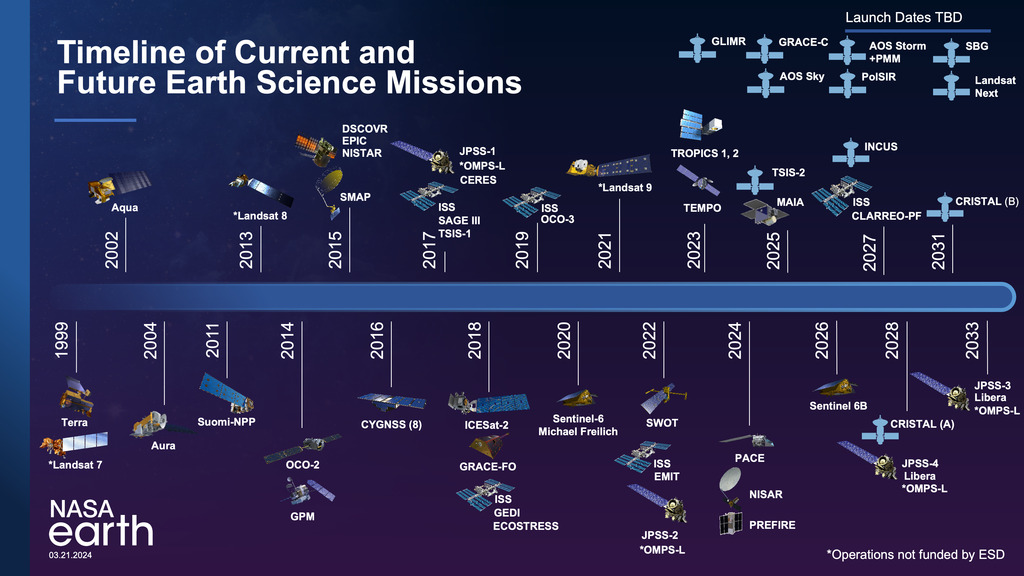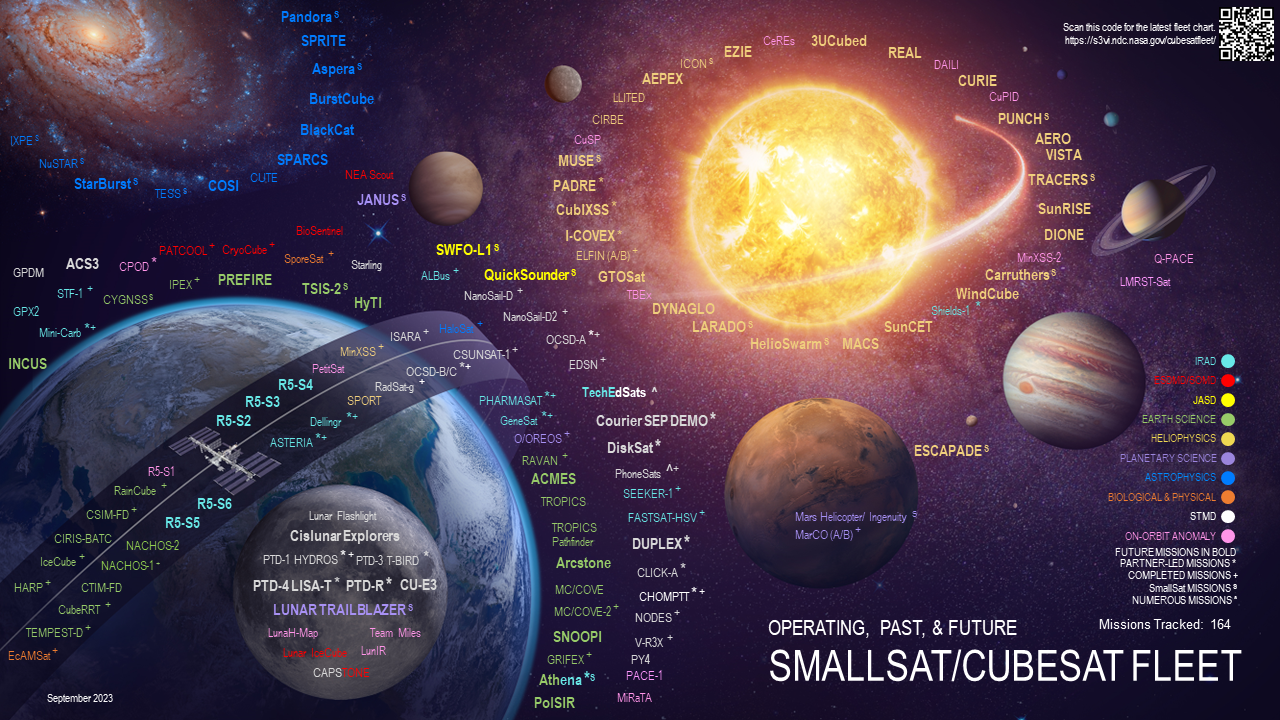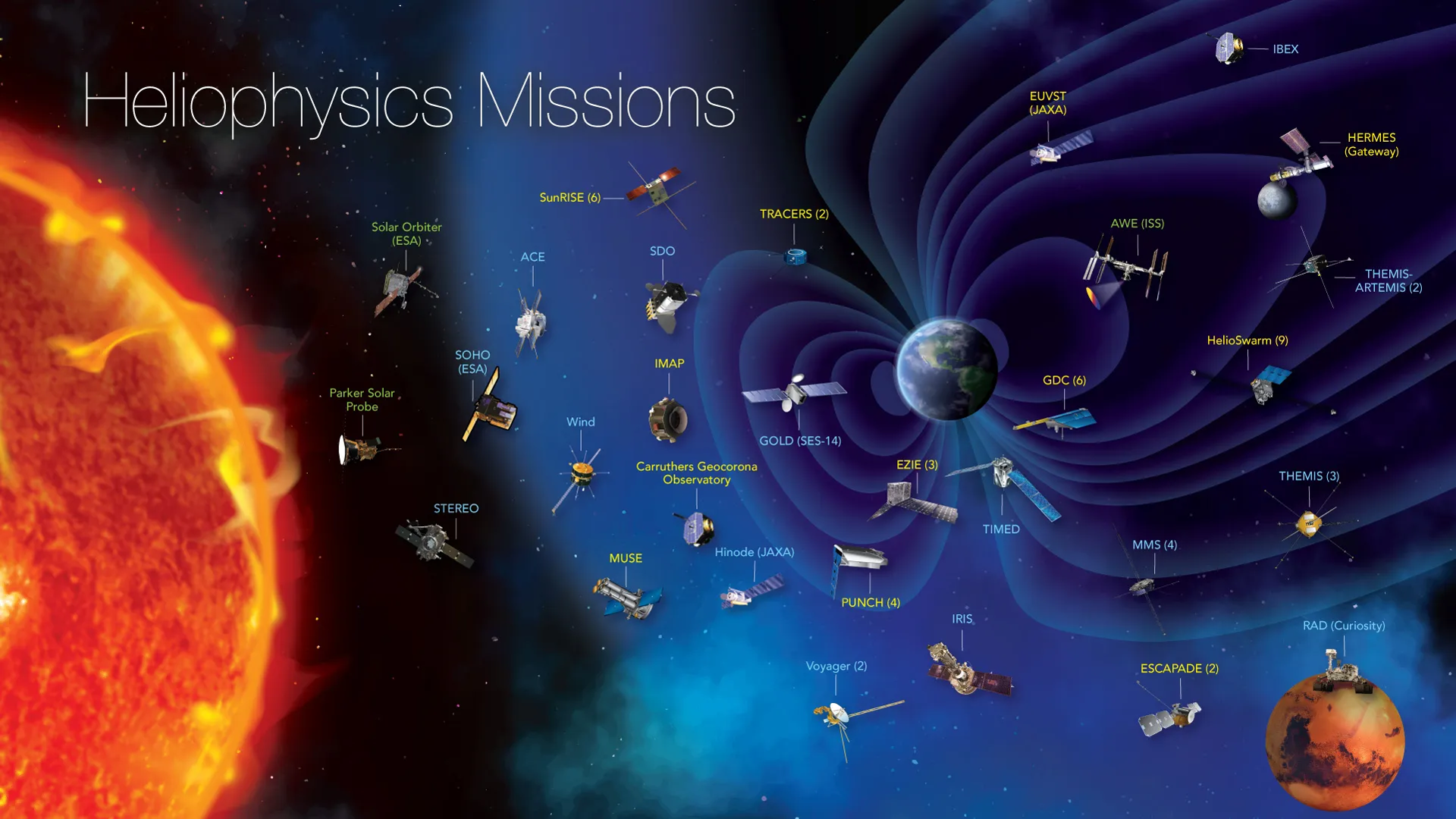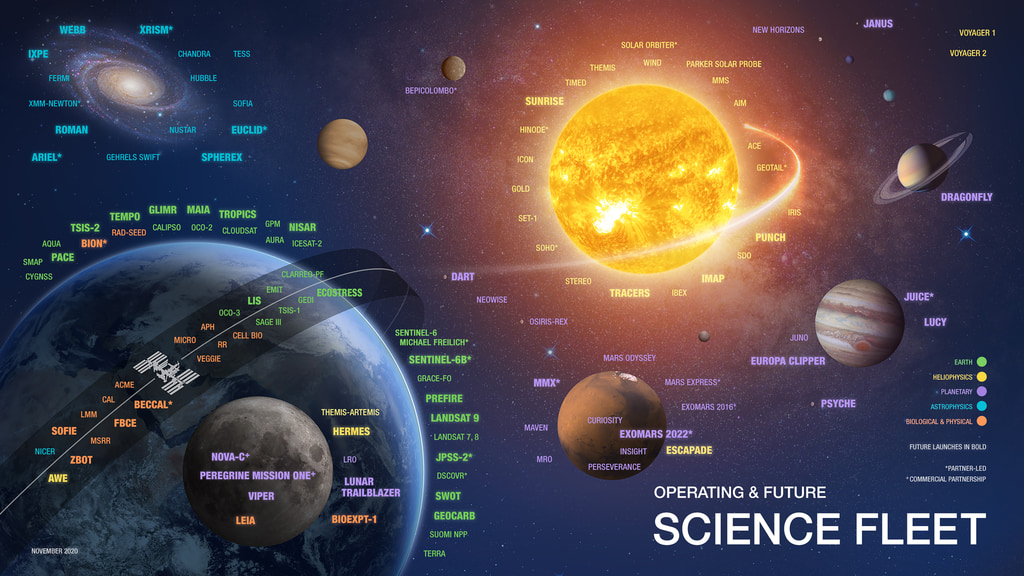Operating and Future Science fleet

The current operational and future science fleet.
NASA Science missions circle the Earth, the Sun, the Moon, Mars, and many other destinations within our Solar System, including spacecraft that look out even further into our universe. The Science Fleet depicts the scope of NASA’s activity and how our missions have permeated throughout the solar system.

NASA's Science fleet by the numbers
Credits
Please give credit for this item to:
NASA's Goddard Space Flight Center
-
Designer
- Jenny Mottar (Digital Management, Inc.)
-
Technical support
- Amy Moran (Global Science and Technology, Inc.)
Release date
This page was originally published on Monday, August 30, 2021.
This page was last updated on Friday, June 6, 2025 at 1:12 PM EDT.







